Skype: neodalle-travel
Tel: +86 135 7447 2266
E-mail: sales@visitaroundchina.com
History of Xanadu
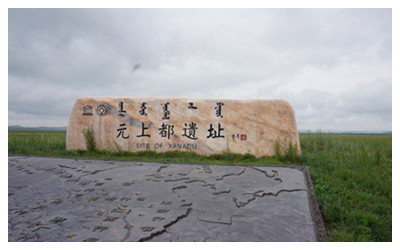 Xanadu, Shangdu in Chinese, was the capital of China in the early years of the Yuan Dynasty (1271 - 1368). Established in 1256, this metropolis, created by the Mongols, a nation on horseback, is considered the archetype combination of farming and nomadic culture. Xanadu’s prominent position in history is as famous as the ancient city of Pompeii in Italy. The present Site of Xanadu, including the general layout and precious relics, was included in the UNESCO World Heritage List in 2012, and has now become a most sought-after destination.
Xanadu, Shangdu in Chinese, was the capital of China in the early years of the Yuan Dynasty (1271 - 1368). Established in 1256, this metropolis, created by the Mongols, a nation on horseback, is considered the archetype combination of farming and nomadic culture. Xanadu’s prominent position in history is as famous as the ancient city of Pompeii in Italy. The present Site of Xanadu, including the general layout and precious relics, was included in the UNESCO World Heritage List in 2012, and has now become a most sought-after destination.
What to see?
Passing through the entrance, you will see a huge bronze statue of Kublai Khan. Electric power carts are available for reaching the first gate; Mingde Gate, where you will pass through the flower district of Jinlianchuan Prairie.
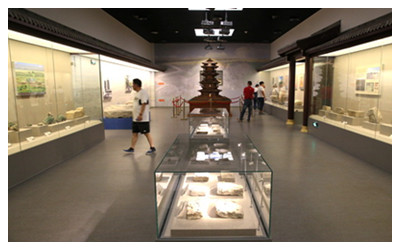 Xanadu Sites Museum is located about 7 km south of the Site of Xanadu ( or Ruins of Shangdu ). The museum is specialized in showing the relics and artifacts relative to the once magnificent “Upper Capital”, the most elegant and magnificent city ever built on grasslands in the world.
Xanadu Sites Museum is located about 7 km south of the Site of Xanadu ( or Ruins of Shangdu ). The museum is specialized in showing the relics and artifacts relative to the once magnificent “Upper Capital”, the most elegant and magnificent city ever built on grasslands in the world.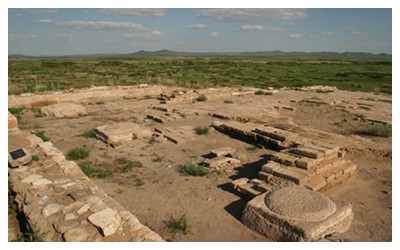 The city of Xanadu was composed of three nested, square enclosures - the inner Imperial Palace, the larger Imperial City, and the Outer City as the outermost defense. It was 2,242 yards (2,050 meters) from east to west, 2,313 yards (2,115 meters) from south to north, and the girth was about 9,843 yards (9 kilometers). The city walls of the Imperial Palace and the Imperial City were built using bricks and stones, while the Outer City walls were composed mainly of soil.
The city of Xanadu was composed of three nested, square enclosures - the inner Imperial Palace, the larger Imperial City, and the Outer City as the outermost defense. It was 2,242 yards (2,050 meters) from east to west, 2,313 yards (2,115 meters) from south to north, and the girth was about 9,843 yards (9 kilometers). The city walls of the Imperial Palace and the Imperial City were built using bricks and stones, while the Outer City walls were composed mainly of soil.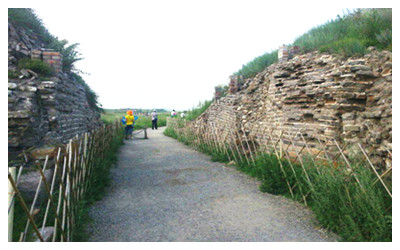 The Mongols’ rectangular Imperial City was located in the southeast of the Outer City. Streets were neatly and symmetrically built, and there were many associated offices and temples. Qianyuan Temple and Huayan Temple were situated in the northwest and northeast corners respectively. The site of the southern Mingde Gate is still there today.
The Mongols’ rectangular Imperial City was located in the southeast of the Outer City. Streets were neatly and symmetrically built, and there were many associated offices and temples. Qianyuan Temple and Huayan Temple were situated in the northwest and northeast corners respectively. The site of the southern Mingde Gate is still there today.Guangxiang Areas
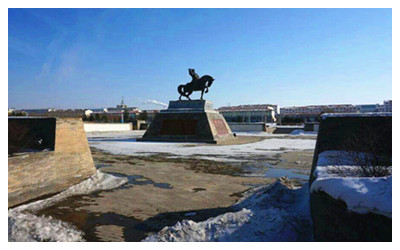 Outside of the Outer City, there were four “Guangxiang Areas” where residents and merchants lived, for they were not allowed to live in the city. In the north were military camps; in the south, busy trade areas full of shops, taverns, and inns; in the west, markets selling sheep and horses, and commercial districts; and in the east, reception areas for missions who wanted to go to court.
Outside of the Outer City, there were four “Guangxiang Areas” where residents and merchants lived, for they were not allowed to live in the city. In the north were military camps; in the south, busy trade areas full of shops, taverns, and inns; in the west, markets selling sheep and horses, and commercial districts; and in the east, reception areas for missions who wanted to go to court.
To the northwest of the city, a canal designed by the scientist Guo Shoujing in Yuan Dynasty is still there. It is the only irrigation work being completely preserved though the grasslands of northern China.
Legendary Xanadu played a very important role in Chinese history, international diplomacy, and commerce. It was prosperous in the Yuan Dynasty, with merchants from around China, Asia, the Middle East, and Europe, coming to make deals of varieties of goods such as metal wares, pottery, and luxuries consumed by aristocrats. Many envoys were receipted in the city. Marco Polo, an Italian traveler and businessman, was paramount in introducing Chinese goods and culture to the rest of the world. His famous book ‘Travels of Marco Polo’ describes his 17 years spent in China, including the special experience in Xanadu.
Travel Tips
Add: northwest to the center of Zhenglan (Xulun Hoh) Banner of Xilingol League, Inner Mongolia
Opening Hours:08:00-18:00
Entrance Fees: CNY50
 Ask Questions ?
Ask Questions ?